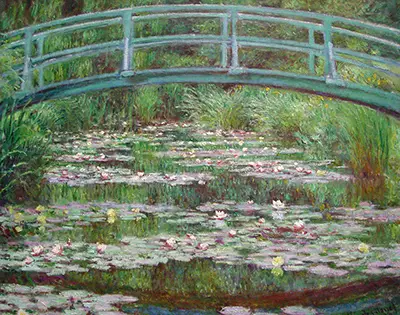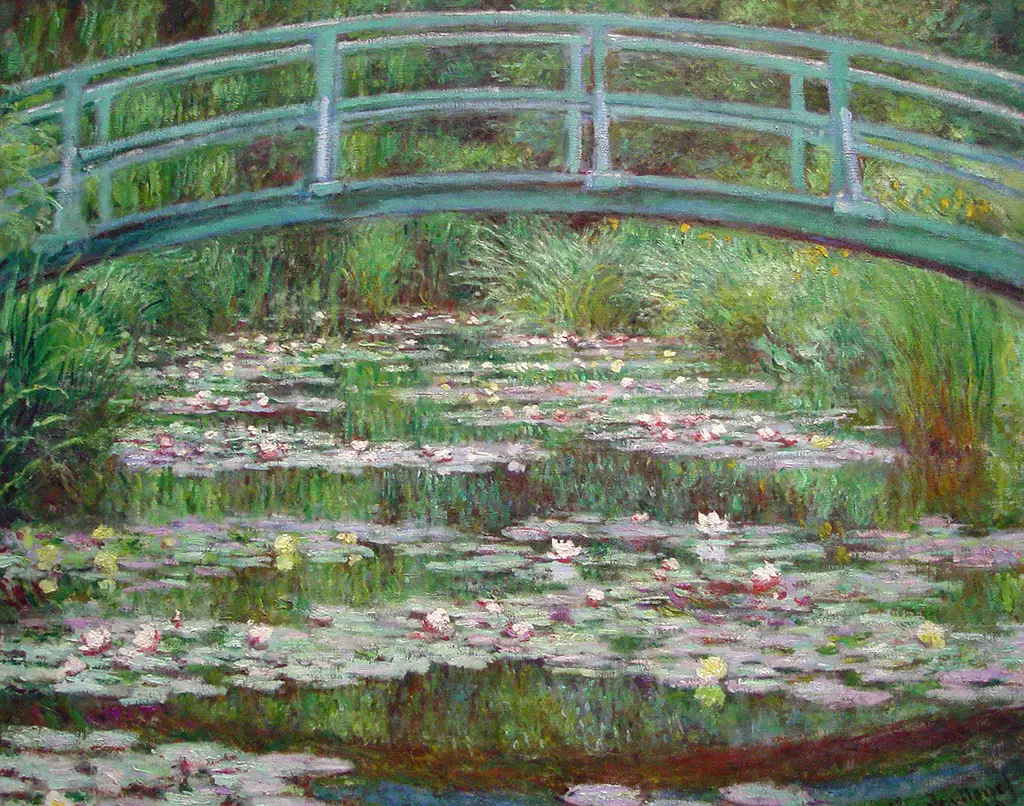The footbridge served many purposes, both helping the ageing artist to navigate his intense and untamed garden design as well as providing a beautiful architectural feature within natural tones of green and pink which derived from the water lilies and surrounding shrubs. Once his work on the garden has been finished he allowed it to grow fairly freely, just making amendments when it became hard for him to get around, or if certain views became blocked. He would have carefully placed the footbridge initially, ensuring that there were several different viewpoints from which to admire it, as he realised it could well feature in a large number of paintings and drawings. By allowing open space around it, he could draw light in from different angles, which then created all manner of different opportunities for him.
Monet had set up his new garden features several years earlier but it would take quite some time for everything to bind together into something resembling a natural environment. Perhaps it was now, in 1899, that he felt he could see this happening, and consequently set about producing large amounts of work here. It may also simply have been the case that he found himself in Giverny for an extended period of time and so decided it made sense to take advantage of the artist's garden for several months on end. As his health deteriorated in later life this spot would become essential to his mental wellbeing, with many of the views by then engrained in his mind, even as his eyesight started to fail him. Some have argued that his eye issues would actually start to influence his style and choice of colours.
The painting that we have included here was selected because of the slight variations found in this composition. Specifically, the area above the bridge is cropped out almost entirely, allowing the lily pond to take center stage as it stretches across most of the vertical of the artwork. Compare that, say, to Japanese Bridge, 1896, which is an earlier version where he is set much further back and an entirely different atmosphere was created. The colour scheme in the earlier piece was also heavily biased towards red tones, where as here it all feels more natural and comfortable, with greens in the shrubbery and the footbridge itself bringing a calmer finish.



